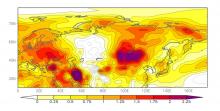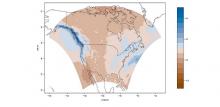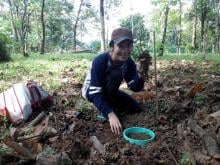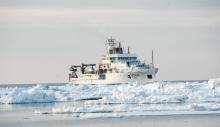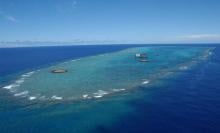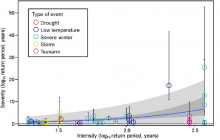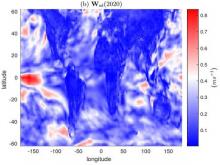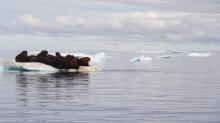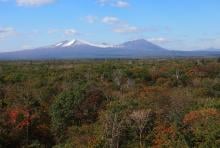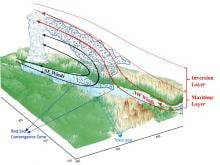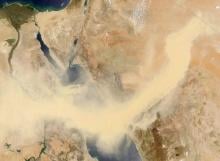Earth Sciences Climatology
News
30 Aug 2019
Variations in the depth of snow cover in the Arctic region from late winter to spring determines the summer temperature pattern in Eurasia, according to Hokkaido University researchers. In particular, deeper-than-usual snow cover in Western Russia enhanced the likelihood of summer heat waves in Europe and Northeast Asia in recent years.
12 Jul 2019
Early snowmelt increases the risk of phenological mismatch, in which the flowering of periodic plants and pollinators fall out of sync, compromising seed production.
04 Dec 2018
A more accurate way of resolving spatial patterns in weather could lead to better predictions of climate change.
12 Nov 2018
Modeling shows that the Indian summer monsoon can trigger heatwaves and sandstorms on the Arabian Peninsula.
09 Oct 2018
Professor Richard Bernhart Owen of the HKBU Department of Geography has analysed African lake sedimentary cores and established connections between a drying climate and technological and evolutionary changes in early humans.
25 Sep 2018
Climate change forecasts could improve by better understanding the variation in natural carbon emissions from different vegetation types.
11 Sep 2018
Collaboration between Nagoya University and Cornell University develops improved model to assess the ability of black carbon to warm the Earth's atmosphere.
12 Jul 2018
The inclusion of taxon-specific sensitivity to a shifting climate helps us understand species distributional responses to changes in climate.
02 Jul 2018
Corals, even in the most far-flung locations, are being affected by climate change but fare better in marine protected areas.
24 May 2018
A highly precise method to determine past typhoon occurrences from giant clam shells has been developed, with the hope of using this method to predict future cyclone activity.
30 Mar 2018
A new method could help scientists understand how wildlife populations are affected by major natural events, such as hurricanes, severe winters, and tsunamis.

28 Feb 2018
More accurate statistical modeling of extreme weather will improve forecasting and disaster mitigation.
30 Jan 2018
A method to visualize hidden statistical structure helps make sense of environmental data.
11 Jan 2018
Professor David Chen and Dr Li Jianfeng found the apparent temperature (AP) increased faster than air temperature (AT) over land in the past few decades, especially in the low latitude areas, and the rise is expected to continue in the future. This finding was recently published in Nature Climate Change.
08 Jan 2018
A new statistical technique could be used to more accurately locate global wind resources.
06 Sep 2017
Quantitative analysis has evidenced the acceleration system of melting ice: dark water surfaces absorb more heat than white ice surfaces, thus melting ice and making more water surfaces in the Arctic Ocean.
06 Sep 2017
Researchers have found evidence that near-ground biogenic emissions of organics suppress cloud formation in cool-temperate forests in autumn, providing clues to how global warming will affect cloud formation and the overall climate.
30 Jul 2017
Modeling leads to a better understanding of the role El Niño plays in increasing rainfall along the Red Sea coast.
10 Jul 2017
A systematic approach to selecting and configuring statistical models improves predictions of extreme events.
02 Jun 2017
A new analysis of an ice core from Dome Fuji in Antarctica, along with climate simulation results, shows a high degree of climate instability within glacial periods with intermediate temperatures.
25 May 2017
Ocean currents affect how climate change impacts movements of species to cooler regions.

25 May 2017
Commonwealth Scientific Community to Gather in Singapore
Events
Sorry, nothing coming up for this discipline
Researchers
Sorry, nothing coming up for this discipline
Giants in history
Sorry, nothing coming up for this discipline


